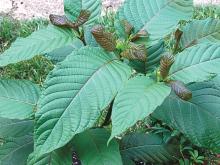Dr. Grundmann conducted an anonymous survey last year about kratom and found that most users are white, married or partnered, and employed for wages. Dr. Grundmann’s survey of 8,049 kratom users also found that a majority of users reported having some college. However, the survey found an inverse relationship between years of education and the tendency to use kratom (Drug Alcohol Depend. 2017 Jul 1;176:63-70).
“The more education somebody has, the less likely they are to use kratom for prescription medicine dependency or for an emotional or mental condition,” Dr. Grundmann said.
Anecdotal evidence
One study conducted by David Galbis-Reig, MD, president-elect of the Wisconsin Society of Addiction Medicine, followed a 37-year-old woman who experienced kratom addiction.


